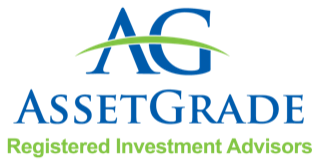
Extra Cash? Don’t Let it Cost You!
BY: Pat Cote, CFA, CFP®
The pandemic has had a terrible impact on many people from both a health and a financial perspective. However, a significant number of people have found their incomes rising, while at the same time their spending has actually gone down (with fewer travel options and long waits for big-ticket items like cars). This has created the happy problem of “extra” cash for some folks.
Remember, however, that it is always a good idea to have an emergency fund containing three to twelve months’ worth of expenses in cash equivalents like a bank account. Once you start to have large amounts of cash beyond these levels, as well as more cash than you will need for any medium-term expenses (like a car or vacation home purchase), it becomes an opportunity cost to leave your savings in cash. Bank accounts are still paying near zero percent even though inflation came in at 7% in 2021! While inflation may decrease a bit in 2022, if we end up with inflation at 5%, that means you are actually losing 5% of your money every year when leaving it in the 0% bank accounts.
So what are the options for that extra cash beyond your emergency fund and upcoming major expenses?
One easy option is to buy Series I savings bonds from the US Treasury. They pay the full inflation amount, so they are currently paying 7%. However, there is a limit of $10,000 per person per year that can be invested in Series I savings bonds. Also, you cannot sell them for the first 12 months after purchase. After the 12 month period they can effectively become part of your emergency fund resources.
Another option is to invest that extra cash as part of your long-term investment portfolio to help fund your retirement. You can invest in your long-term portfolio through a few different types of accounts:
- 401K through your employer
- Traditional or Roth IRA
- Brokerage account
401K – You can maximize your 401K contributions through your employer – the 2022 limit is $20,500, or $27,000 if you are age 50 or older (i.e., if you turn age 50 in 2022, you can contribute $27,000 to your 401K during the 2022 calendar year). It is important to make sure you are getting the full company match. For example, if the company matches 50% up to the first 5% of your compensation, you would want to contribute at least 5% to receive the full company match. While taking advantage of the company match might lead to a reduced paycheck for you because you increase your 401K contributions, you could tap into the “extra cash” to cover any shortfalls the larger 401K contribution level creates.
Traditional or Roth IRA - If you are below the income thresholds for tax deductible contributions for a traditional IRA ($68,000 if single or $109,000 if married filing jointly) or after-tax contributions to a Roth IRA ($144,000 if single or $214,000 if married filing jointly), either option might be attractive to you. If your income is above those thresholds, making additional nondeductible IRA contributions is not likely to be attractive for you because the earnings will be taxed as regular income when you withdraw them in the future. Earnings in brokerage accounts are taxed at lower rates for both long-term capital gains and qualified dividends.
Brokerage - If you have a large amount of extra cash, you are most likely going to use a taxable brokerage account to invest it. The key question might be, do you invest it all at once or do you use dollar-cost-averaging to invest over time? Many people are uncomfortable with the risk of a stock market decline immediately after investing (how would you feel if you invested that large amount, then the market fell 20% the next day?).
To avoid that issue, a popular technique is to invest a set amount over a period of time. For example, if you had $500,000 to invest in your long-term portfolio, you could invest 1/12th each month for a year (i.e., $41,667 each month). You could also set up a rule to invest more if the stock market declines (e.g., invest an extra $41,667 if the stock market falls 10%, then another $41,667 if it fell another 10%). By setting up the rule in advance, it can help overcome the emotions that can kick in during stock market declines.
Over the years, we have come across many people, including many sophisticated investors, who have felt frustrated and/or embarrassed with holding onto large cash positions for extended periods. We are seeing even more people with the “happy problem” of extra cash now.
At any given time, there can be a number of reasons why it does not feel like the right time to invest (pandemic, politics, high stock valuations, etc.). However, not investing your extra cash can create a large opportunity cost if you end up leaving the cash in a 0% bank account

